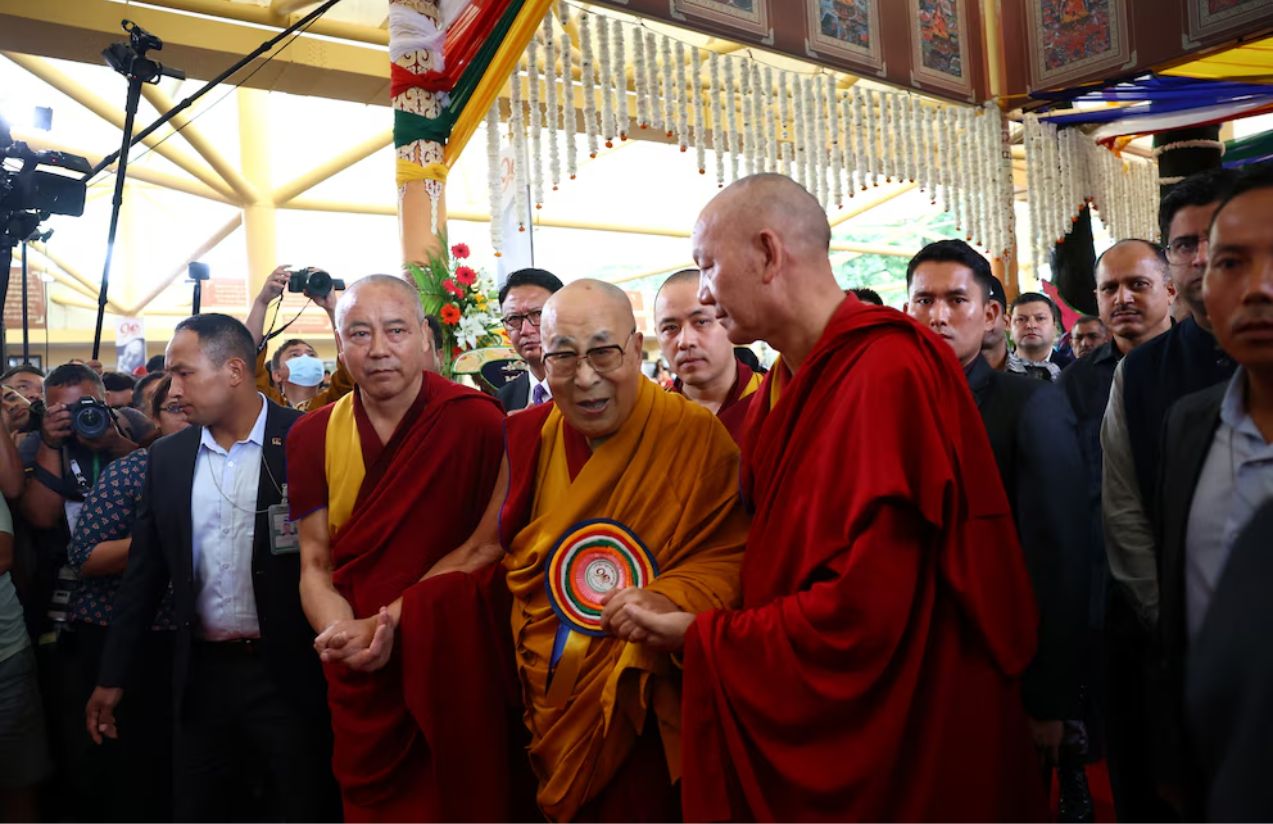The Dalai Lama, Tenzin Gyatso, began a 45-day visit on Saturday to Ladakh, a strategically important region in the Indian Himalayas, amid growing geopolitical tensions with China over the question of his future spiritual succession. The trip comes shortly after the Tibetan spiritual leader celebrated his 90th birthday and is being seen by international observers as a symbolic gesture against Beijing’s claims in the region.
Gyatso departed from Dharamsala, where he has lived in exile since 1959, accompanied by a group of close monks and under heavy security. An Indian Air Force plane flew him to Leh, the capital of Ladakh, while a motorcade of security vehicles escorted him on the ground. Indian authorities activated the “Z-plus” protection protocol—the country’s highest level of security—which includes armed escorts and enhanced surveillance, according to official sources.
Thousands of devotees, Buddhist monks, and local residents lined the roads from the airport to his temporary residence at Shewatsel Phodrang to welcome him. The spiritual leader will stay there during his time in the region.
Before leaving Dharamsala, the Dalai Lama described the journey as part of his message of “compassion and kindness,” adding that practicing these values would be “the best birthday gift” his followers could give him.
During his stay in Ladakh, the Dalai Lama is scheduled to give public teachings at the end of July on “The Thirty-Seven Practices of a Bodhisattva” and will also travel to the remote region of Zanskar. Large gatherings of followers are expected, both from the Himalayan region and from Tibetan communities across India.
However, the trip’s significance goes beyond the spiritual. Ladakh borders Chinese-controlled Tibet, where recent military skirmishes between Indian and Chinese troops have heightened tensions. In this context, the visit—facilitated by the Indian government—is seen as an implicit rebuke of Beijing’s stance. China considers the Dalai Lama a “separatist” without legitimate authority and rejects any Indian claims over the region.
On July 2, the Dalai Lama reignited the succession debate by declaring that his foundation, Gaden Phodrang, holds exclusive authority over the recognition of his future reincarnation. This directly challenges China’s so-called “Order No. 5,” a regulation that mandates Communist Party approval for the reincarnation of religious figures.
The succession process has gained international prominence, particularly after the United States passed the Tibetan Policy and Support Act, which authorizes sanctions against Chinese officials who interfere in the future selection of the Tibetan spiritual leader.
Gyatso himself, revered by millions as the reincarnation of Buddha, recently stated his intention to “live beyond 130 years,” further extending the uncertainty around his succession and reaffirming his defiance toward China’s control.
While India officially maintains religious neutrality and insists it hosts the Dalai Lama on humanitarian grounds, symbolic moves—such as using state aircraft and deploying top-tier security—are widely interpreted as tacit support for the Tibetan cause.
The Dalai Lama’s succession is emerging as a potential new flashpoint in international relations. A split between the Tibetan religious tradition—based in exile—and the Chinese state apparatus could result in the existence of two rival spiritual leaders: one endorsed by the global Tibetan diaspora, and another appointed by Beijing.

